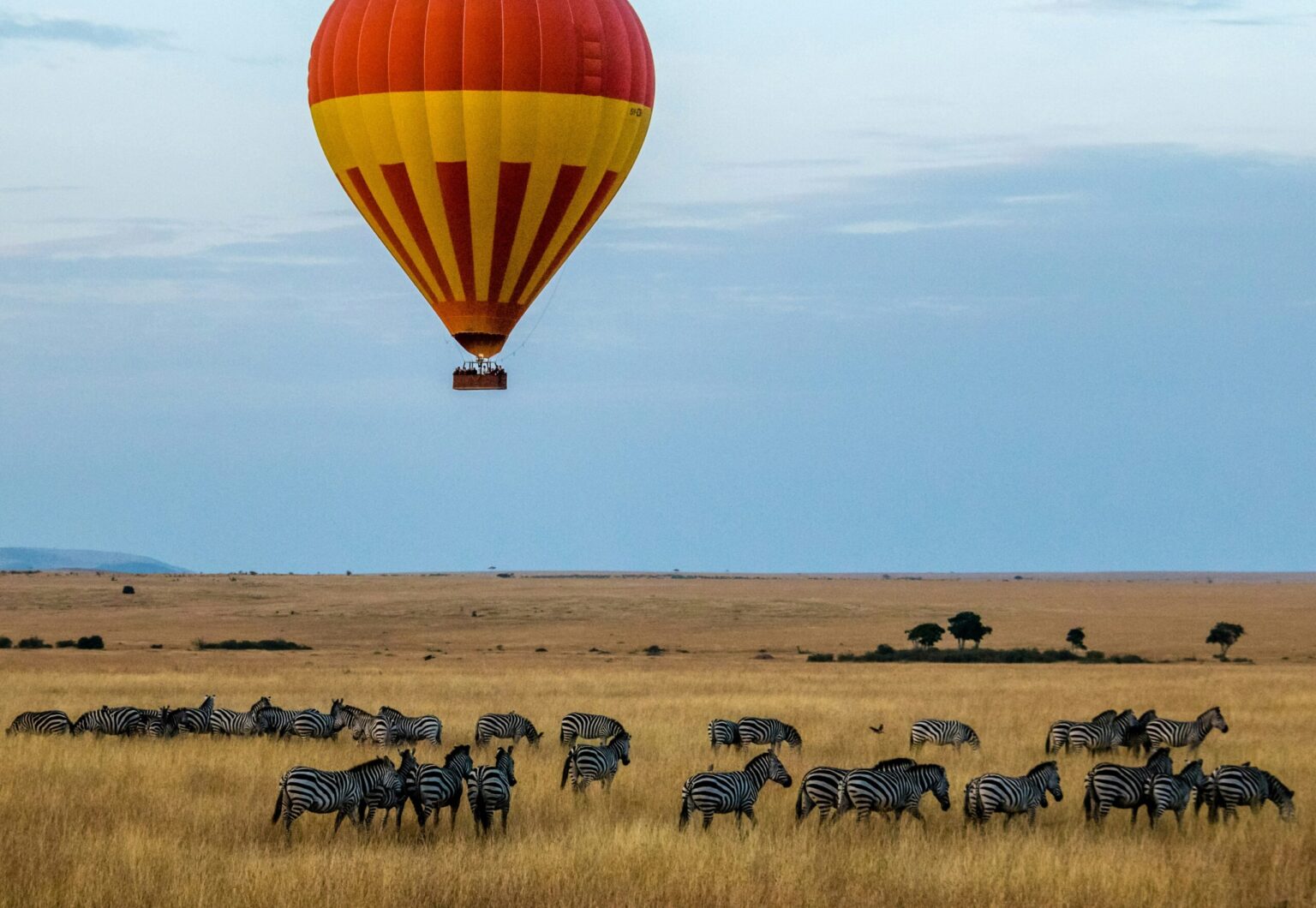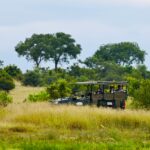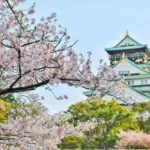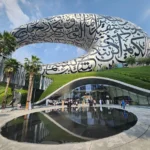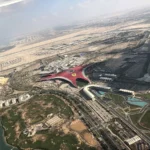Some journeys aren’t just about the destination—they’re about feeling time slow down, dust cling to your boots, and the ground tremble beneath the hooves of a thousand wildebeest. Welcome to Masai Mara, where Africa doesn’t whisper—it roars.
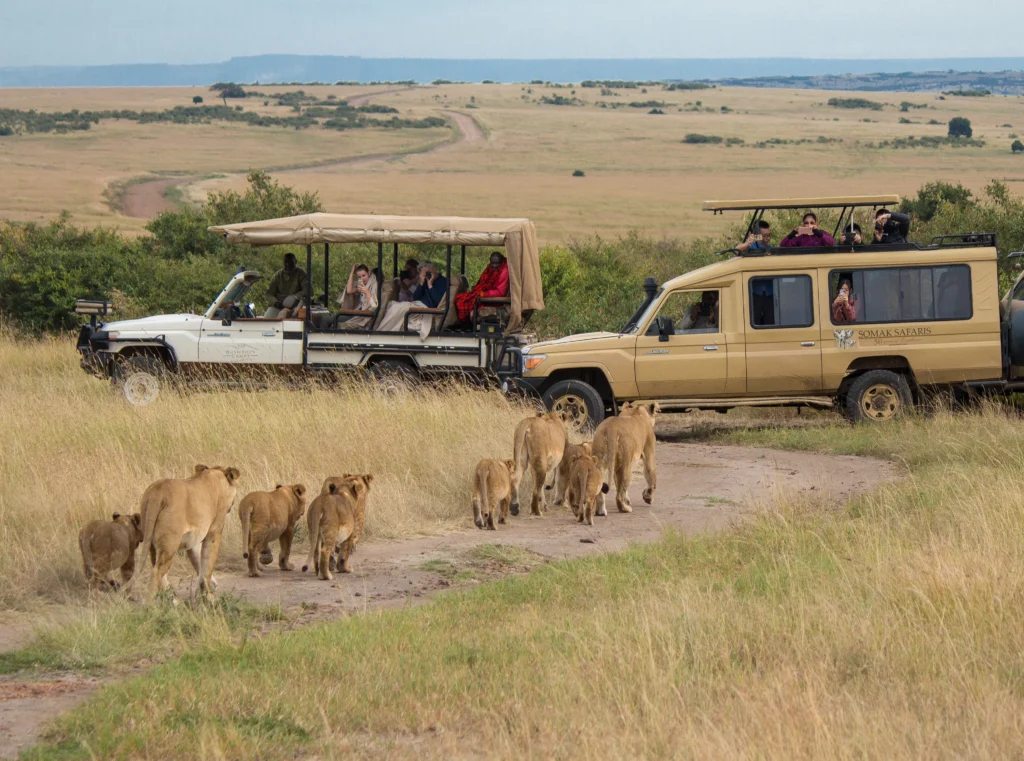
Every year, from July to October, Kenya’s legendary Masai Mara hosts one of Earth’s greatest wildlife spectacles: The Great Migration. It’s not just a safari. It’s nature’s version of a grand opera, with dramatic entrances, tense crossings, and a soundtrack of thundering hooves and distant lion calls.
But to truly witness this magic, timing and planning matter. Here’s how to catch it just right.
What is the Great Migration?
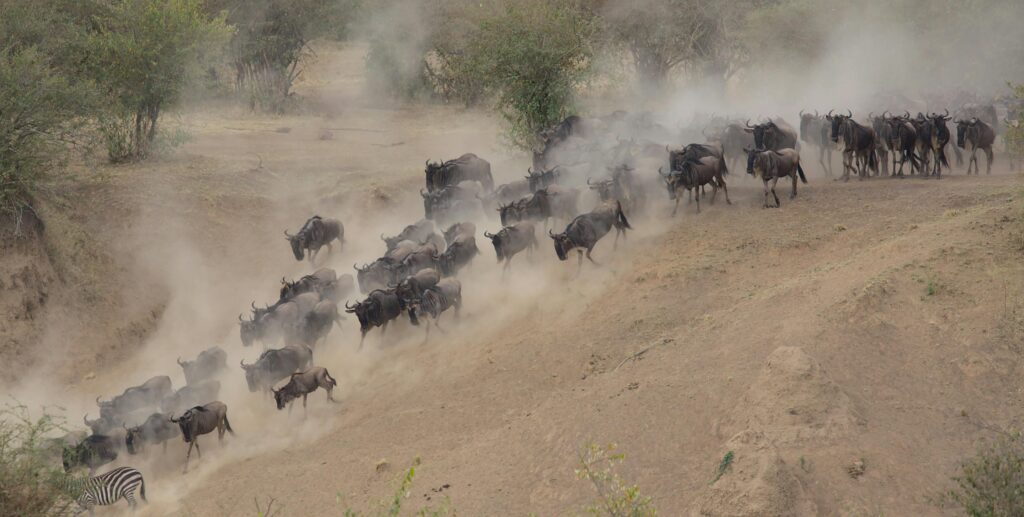
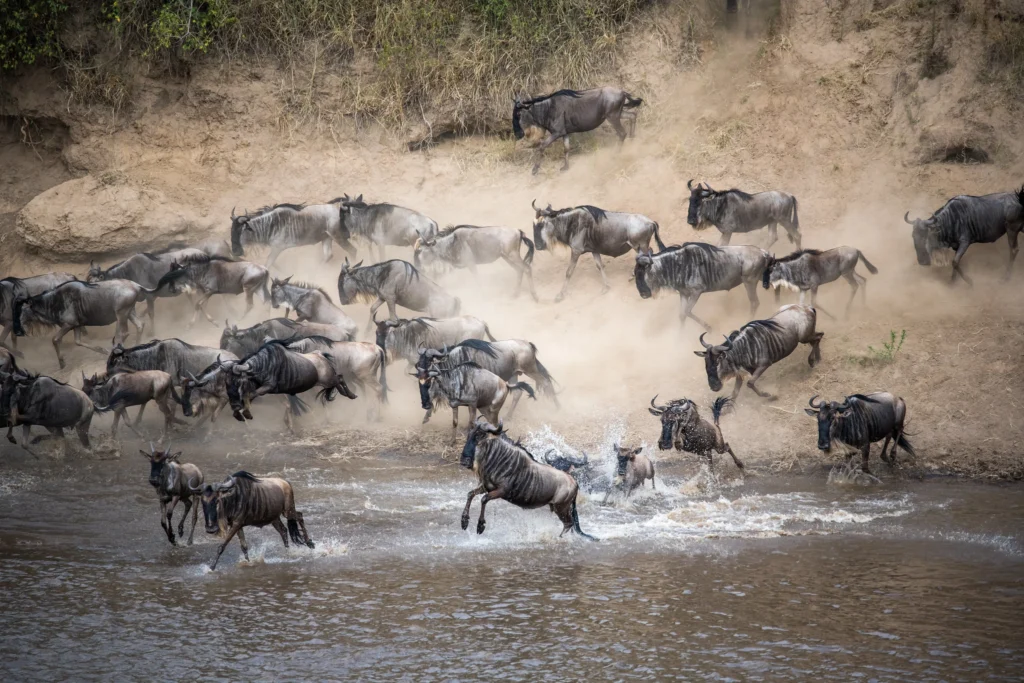
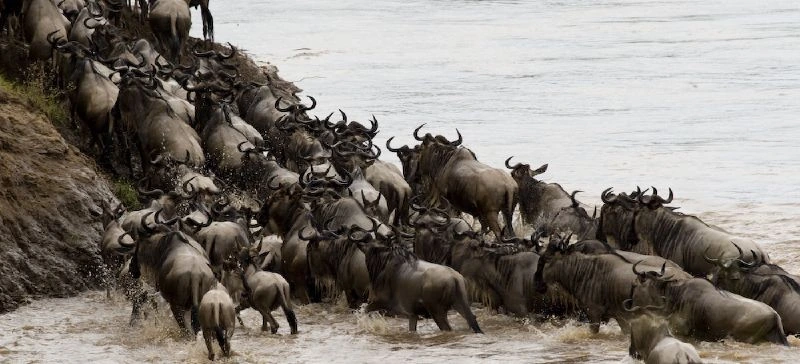
The Great Migration is the annual movement of over 1.5 million wildebeest, joined by zebras, gazelles, and elands, in a never-ending circular journey across the Serengeti in Tanzania and the Masai Mara in Kenya. They’re chasing rain—literally. The promise of fresh grass and water drives this timeless cycle.
But their journey is not without danger. Crocodile-infested rivers, prowling predators, and exhausting distances stand in their path. And yet, they move—instinctively, relentlessly. Watching this unfold in real time is not just a sight. It’s a feeling.
When to Go: Timing is Everything
If your dream is to witness the iconic Mara River crossings, when herds bunch up at the banks and take a death-defying plunge through crocodile-filled waters, then late July to early September is your best bet.
Here’s a quick seasonal breakdown:
-July – Early August: The herds begin arriving in the Mara. Early crossings may occur, but nothing is guaranteed yet.
-Mid-August – September: Prime time. Most river crossings happen now. Camps near the Mara River get booked out months in advance.
-October: The herds start to head back toward Tanzania, but predator action is still intense.
-November – June: Migration activity slows in the Mara. It’s still a great time for general wildlife viewing, especially in quieter months like January and February.
Where to Stay for the Best Viewing
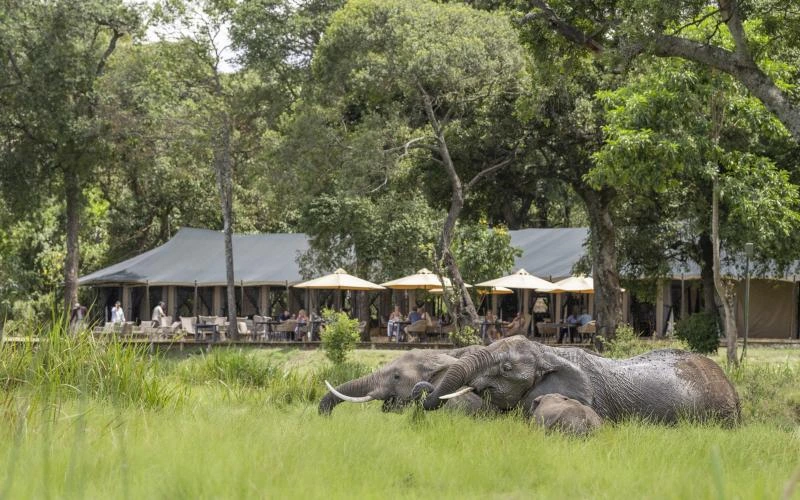
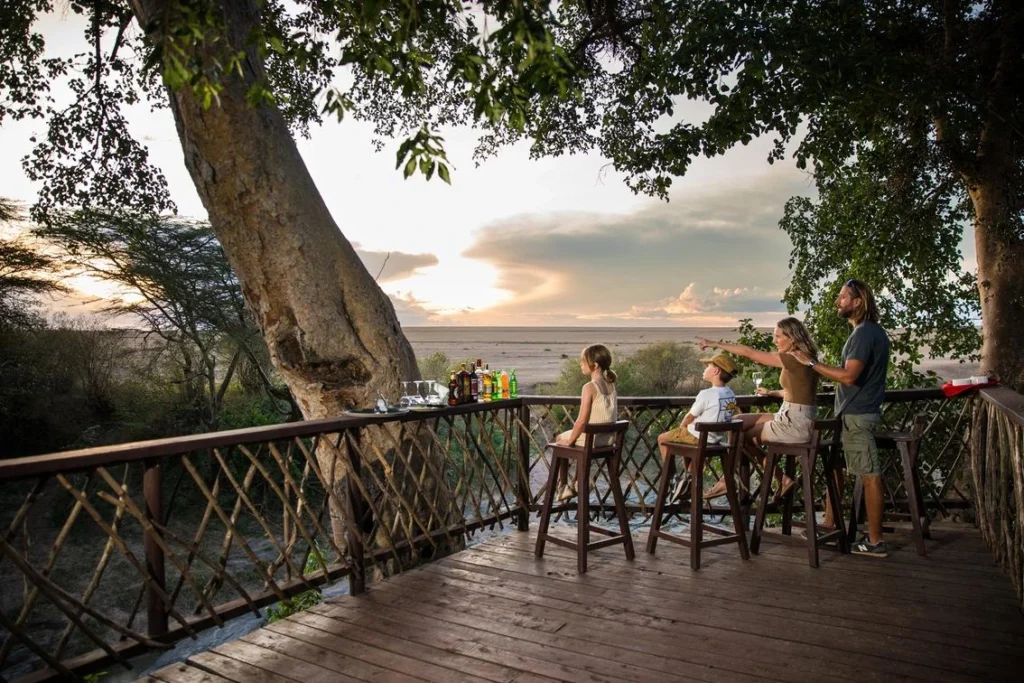
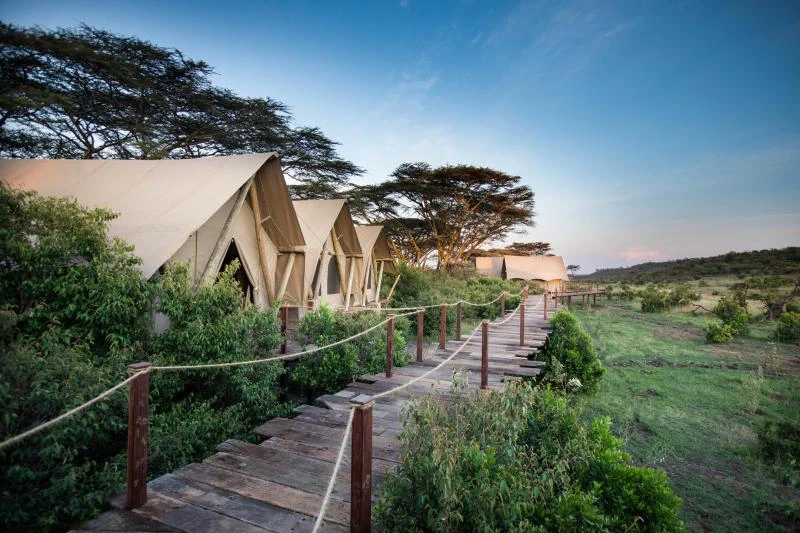
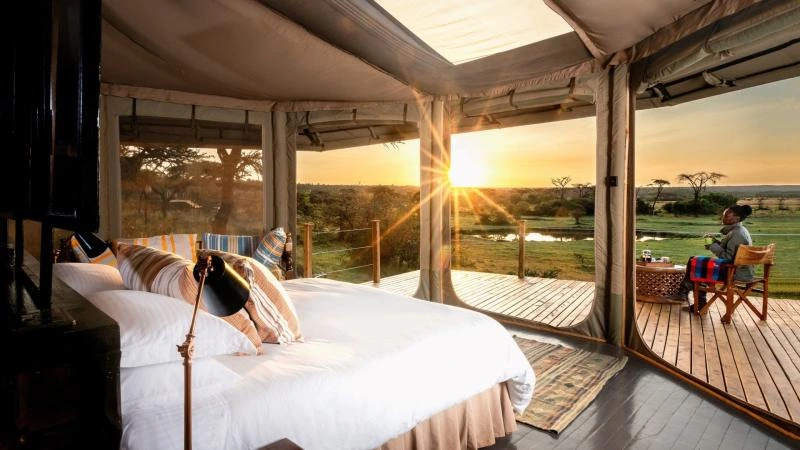
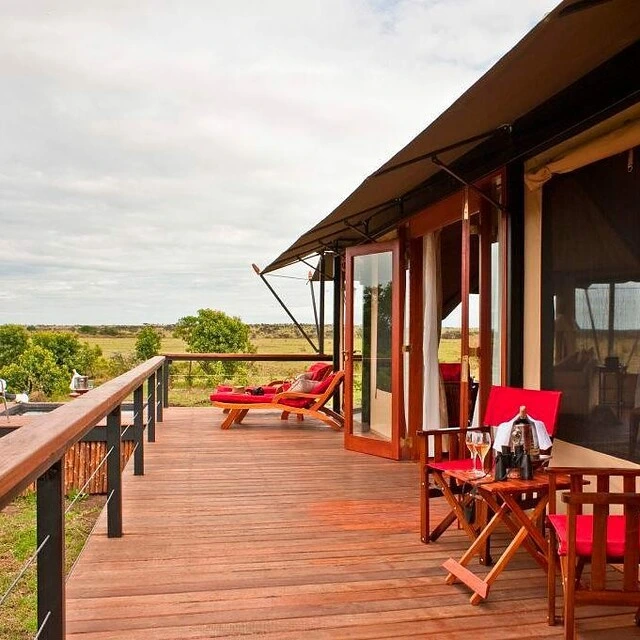
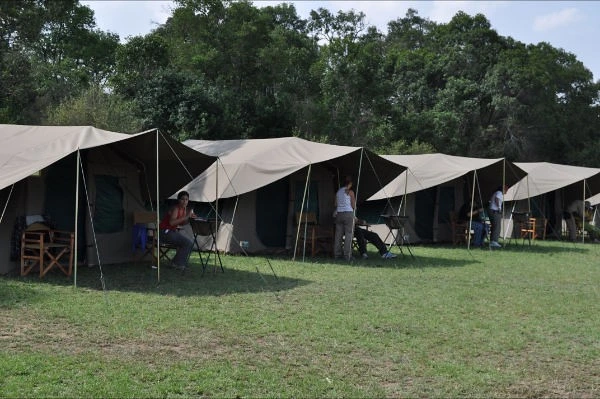
Location can make or break your experience. For front-row seats to the migration:
Mara Triangle: Tucked inside the park, this is ground zero for river crossings. It’s less crowded and exceptionally scenic.
Greater Mara Conservancies (e.g., Mara North, Olare Motorogi): These private reserves allow off-road game drives and night safaris, making your experience more flexible and exclusive.
Luxury Lodges vs. Mobile Camps: Want your coffee with a side of Wi-Fi? Go luxury. Prefer to feel the pulse of the wild under canvas? Opt for a mobile camp that follows the migration.
Tip: Mobile camps like Serian’s Nkorombo, Entim, or Alex Walker’s Serian offer unbeatable migration proximity and raw authenticity.
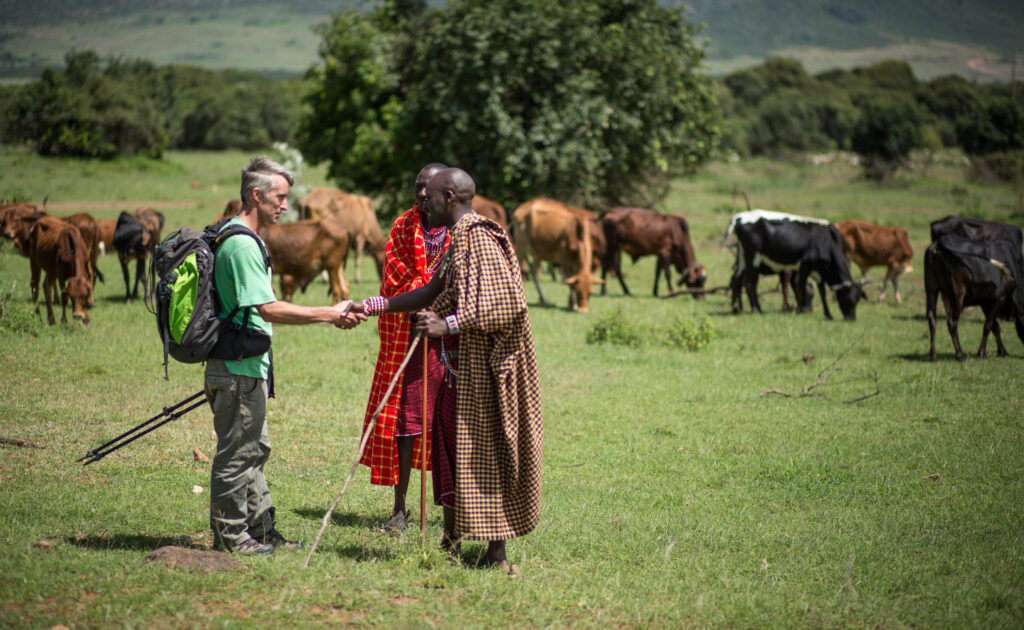
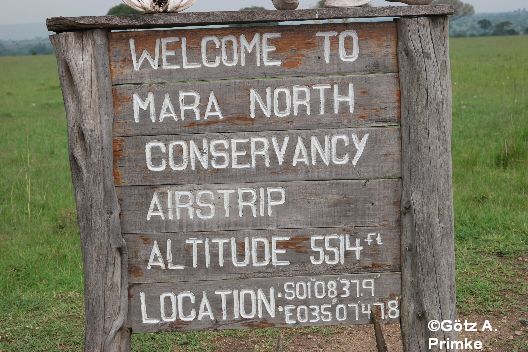
Air Safari in Masai Mara
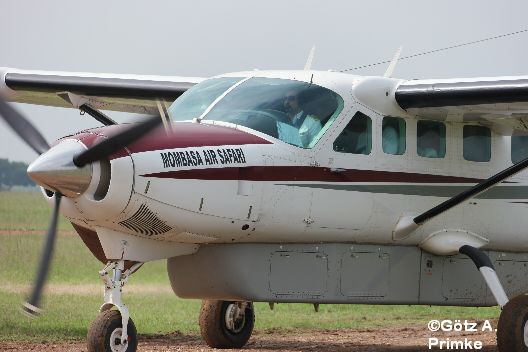
An air safari in Masai Mara offers an unforgettable bird’s-eye view of Africa’s most iconic wildlife reserve. Typically done in a small aircraft or bush plane, the safari gives international tourists the chance to fly over the vast savannahs, witnessing herds of elephants, wildebeest migrations, lions, and more from the skies. These flights often connect different lodges or camps, providing both scenic views and convenient transfers.
To book an air safari, international travelers can reserve through reputable tour operators, luxury lodges, or safari booking platforms online. Many packages include pickup from Nairobi, flights, accommodation, and game drives. For the best experience, book at least 2–3 months in advance, especially during the Great Migration season (July–October).
How to Book a Hot Air Balloon Safari in Masai Mara
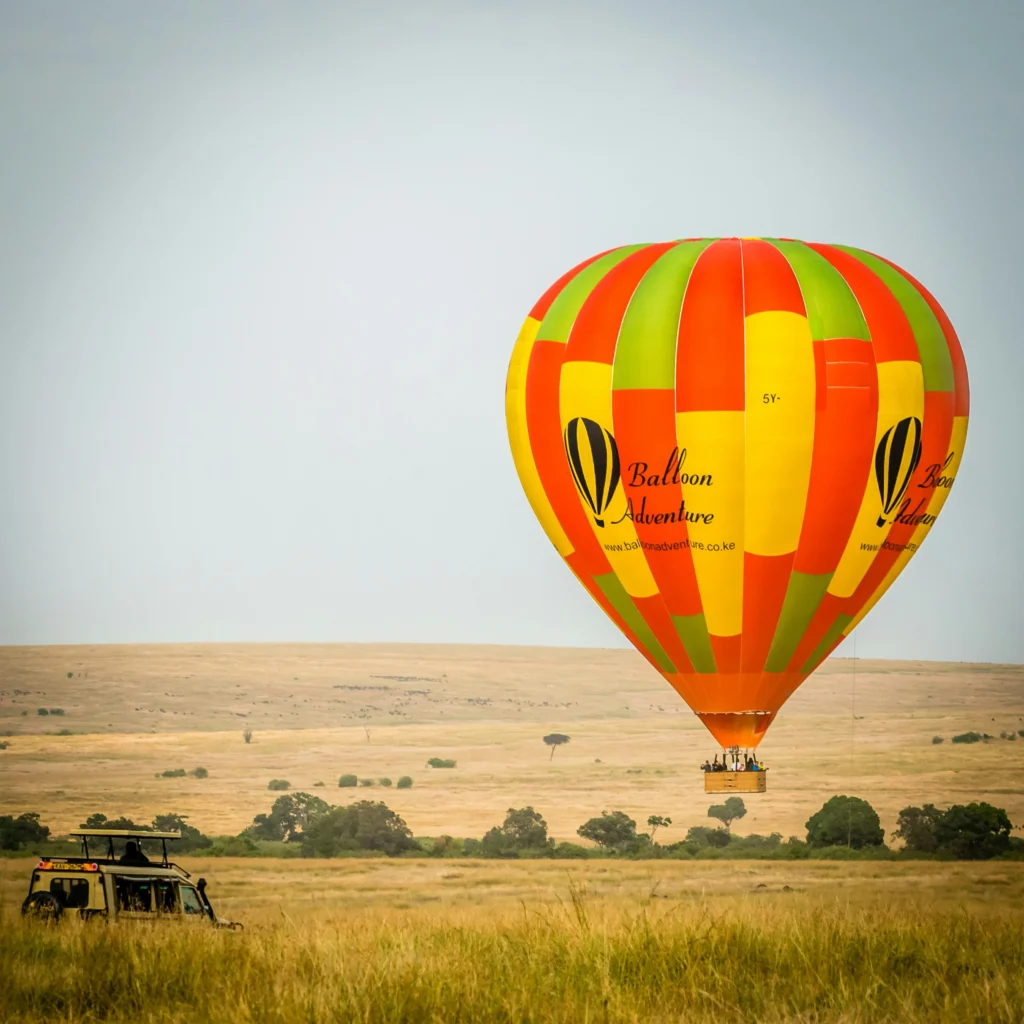
To book a hot air balloon safari in Masai Mara, visit the websites of trusted operators like Balloon Safaris Ltd, Mara Balloon Safaris, or Skyship Company, or inquire directly through your lodge or travel agent. Flights usually take place at sunrise and include a champagne breakfast in the bush. Prices range from $450–$550 USD per person, and it’s recommended to book early as slots fill fast—especially during peak season.
What You’ll See (Besides Wildebeest)
Yes, the wildebeest dominate the scene—but they’re not alone. Expect:
Predators on the hunt – Lions, cheetahs, hyenas, and leopards all follow the migration like a buffet on legs.
Crocodiles at the riverbanks – Some lie still for days, waiting for a single mistimed leap.
Elephants, giraffes, and buffalo – The permanent residents of the Mara add extra magic.
Rare moments – A lioness calling to her cubs. A baby wildebeest learning to stand. A cheetah sprinting into dust.
It’s not just photography. It’s storytelling in motion.
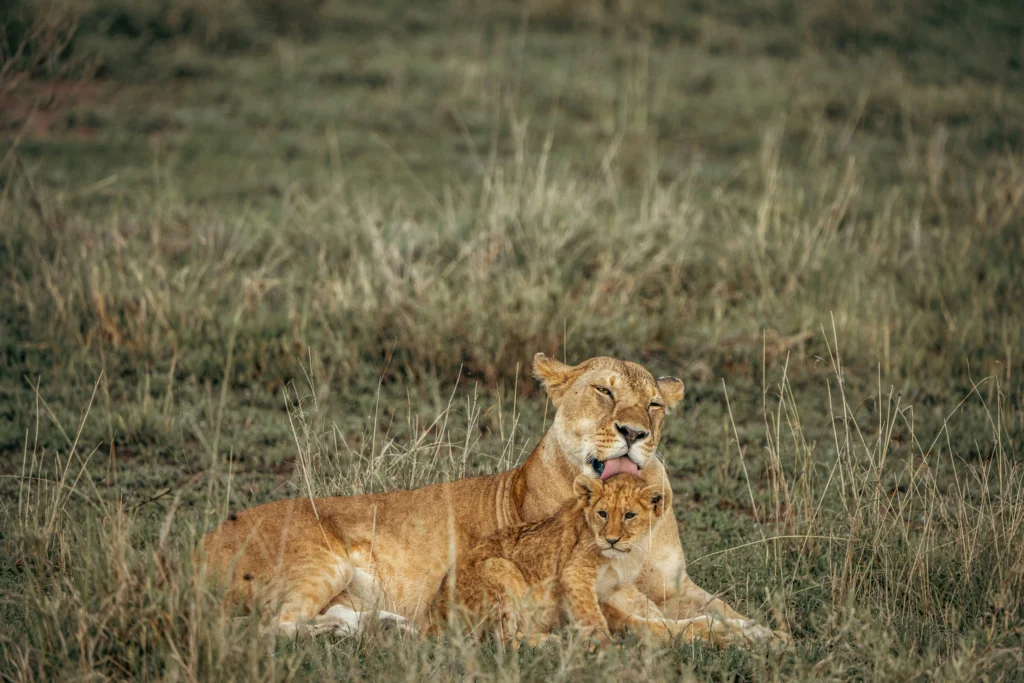
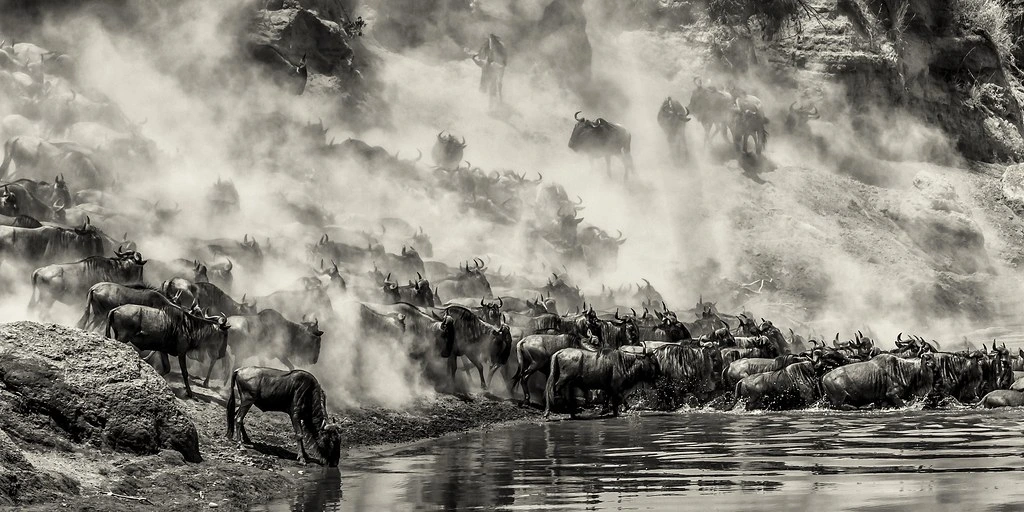
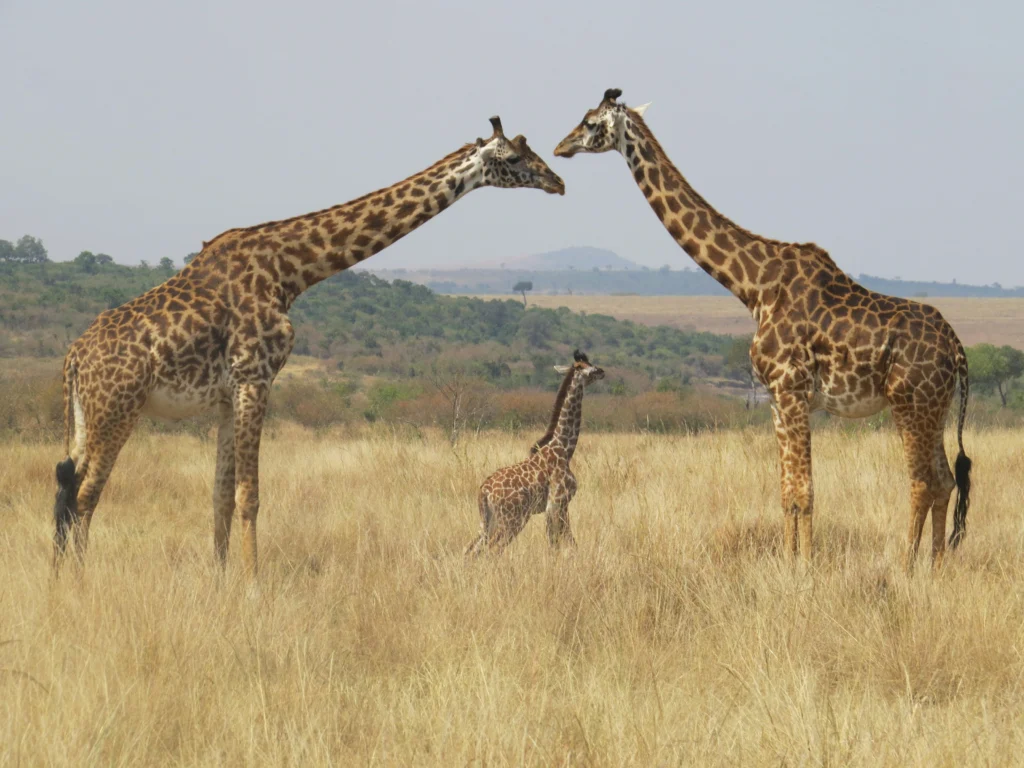
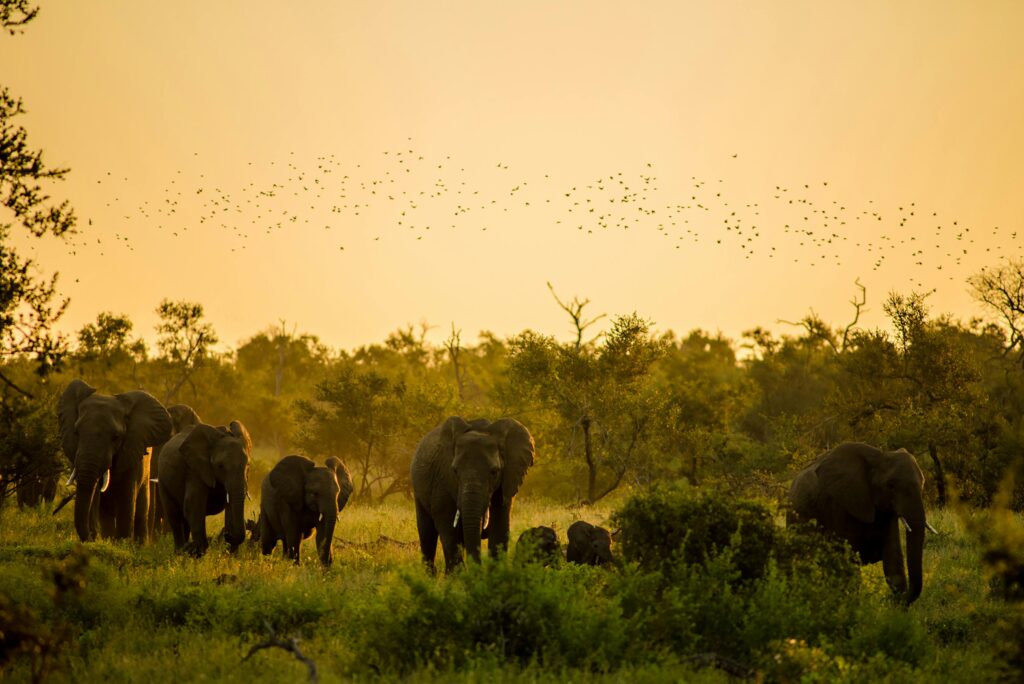
How to Travel Smart
A few tips to make the most of your Masai Mara migration safari:
Book early. Especially for travel in July–September. Lodges fill fast, and the best guides are often booked months ahead.
Go with a reputable safari company. Good guides mean better sightings, safer drives, and richer experiences.
Pack light, but right. Neutral clothing, a good zoom lens, sunblock, a hat, and binoculars are must-haves.
Be patient. You might wait hours for a river crossing that never happens. And then, when you least expect it—it does.
A Moment You’ll Never Forget
One moment stands out to most travelers. It’s not the roaring lions or the crossings. It’s the stillness before it all. The cool morning mist. The twitch of a gazelle’s ear. The silence. Then, like a dropped drum, a low rumble begins. And suddenly, the land is moving. Wildebeest stretch to the horizon. Zebras grunt. A vulture circles overhead.
You’re no longer a tourist. You’re part of something ancient and wild.
Final Thoughts: Let the Wild Lead
Masai Mara isn’t polished or predictable. It’s dusty, raw, and sometimes slow. But that’s what makes it unforgettable. The Great Migration is a reminder that life—real, pulsing, unpredictable life—is always moving.
You just have to be in the right place when it does.

